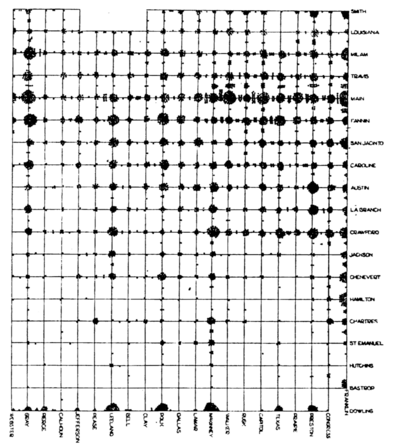The Public Roads Administration’s studies of the traffic-discharge capacity of highways have reached the conclusion that a one-way, two-lane roadway with no intersections will discharge without unreasonable congestion an hourly traffic of 3,000 vehicles moving at an average speed of 35 miles per hour. With equal congestion but with three traffic lights per mile, each set on a half-minute interval, the hourly discharge is reduced to at best 1,500 vehicles an hour. One or two more traffic lanes would have to be provided to restore the highway to its intersection-free capacity.

Street intersections also involve the hazard of accidents. As illustrated by the typical traffic-accident map reproduced as figure 30, most of the accidents on city streets occur at street intersections. Where traffic volume is great as it is on arterial streets, reduction of the number of intersections can materially reduce the total of accidents.
